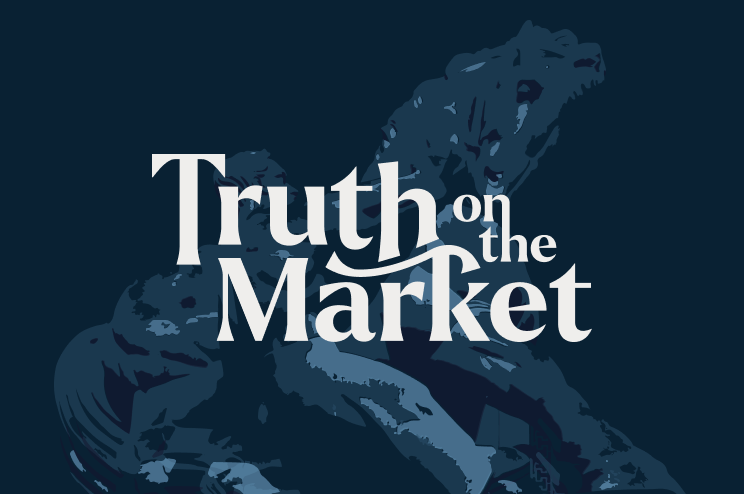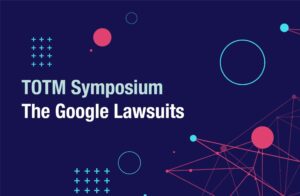Showing results for: “digital markets act”
Section 2 Symposium: Tim Brennan on the Relationship Between Regulation and Antitrust
When I first started working in antitrust at the Justice Department over thirty years ago—there’s a hard reality to accept—the Antitrust Division was then embroiled in an effort to reform the regulation of oil pipelines. The argument on this now obscure issue was that effective prevention of the exercise of market power by natural monopoly ... Section 2 Symposium: Tim Brennan on the Relationship Between Regulation and Antitrust
Section 2 Symposium: Herbert Hovenkamp on Patents and Exclusionary Practices
One interesting aspect of the DOJ Report on Section 2 is the scant, episodic treatment of IP issues. The Report rejects the presumption of market power for patent ties (p. 81); has a very brief discussion of refusal to license patented parts in which it properly rejects the reasoning of the Ninth Circuit’s Kodak decision ... Section 2 Symposium: Herbert Hovenkamp on Patents and Exclusionary Practices
Section 2 Symposium: Bill Kolasky on Proving Market Power
The market power section of the Department’s Single Firm Conduct report is one of the strongest sections of the report. It provides an exceptionally clear discussion of the market power element under Section 2. It recognizes, in particular, that a violation of Section 2 requires more than mere market power, but rather a finding of ... Section 2 Symposium: Bill Kolasky on Proving Market Power
Section 2 Symposium: Josh Wright on An Evidence Based Approach to Exclusive Dealing and Loyalty Discounts
The primary anticompetitive concern with exclusive dealing contracts is that a monopolist might be able to utilize exclusivity to fortify its market position, raise rivals’ costs of distribution, and ultimately harm consumers. The unifying economic logic of these anticompetitive models of exclusivity is that the potential entrant (or current rival) must attract a sufficient mass ... Section 2 Symposium: Josh Wright on An Evidence Based Approach to Exclusive Dealing and Loyalty Discounts
Section 2 Symposium: Tim Brennan on Predation, Exclusion, and Complement Market Monopolization
As evidenced by this on-line symposium, the handling of cases under the rubrics “monopolization,” “single firm conduct”, or “abuse of dominance” continues to be debated by the competition policy community. This debate, as evidenced by the Antitrust Division’s Sept. 2008 single firm conduct report and the FTC responses, is not restricted within the U.S. The ... Section 2 Symposium: Tim Brennan on Predation, Exclusion, and Complement Market Monopolization
Section 2 Symposium: Howard Marvel on Safe Harbors for Short Term Exclusive Dealing Contracts
Exclusive dealing prevents the bait-and-switch behavior by dealers who convert customers drawn by one brand to the products of its rivals. Despite the red flag of “exclusive” in its title, the practice is ordinarily uncontroversial, indeed innocuous. Automobile manufacturers often pay incentives to encourage dealers to deal exclusively in their vehicles. Business format franchising ensures ... Section 2 Symposium: Howard Marvel on Safe Harbors for Short Term Exclusive Dealing Contracts
Section 2 Symposium: Dan Crane on Buyer-Instigated Bundled Discounts
Bundled discounts have been one of the hottest monopolization topics of the last decade. Much of the trouble began with the Third Circuit’s en banc decision in LePage’s v. 3M, which reversed an earlier 2-1 panel decision which in turn had overturned a plaintiff’s jury verdict largely based on 3M’s bundled discounts. After the Solicitor ... Section 2 Symposium: Dan Crane on Buyer-Instigated Bundled Discounts
Section 2 Symposium: Thom Lambert on The DOJ-FTC Divide on Bundled Discounts
A bundled discount occurs when a seller offers to sell a collection of different goods for a lower price than the aggregate price for which it would sell the constituent products individually. Such discounts pose different competitive risks than single-product discounts because, as I explained in this post, they may have an exclusionary effect even ... Section 2 Symposium: Thom Lambert on The DOJ-FTC Divide on Bundled Discounts
Section 2 Symposium: Herbert Hovenkamp on Predatory Pricing and Bundled Discounts
The baseline for testing predatory pricing in the Section 2 Report is average avoidable cost (AAC), together with recoupment as a structural test (Report, p. 65). The AAC test or reasonably close variations, such as average variable cost or short-run marginal cost, seems about right. However, differences among them can become very technical and fine. ... Section 2 Symposium: Herbert Hovenkamp on Predatory Pricing and Bundled Discounts
Section 2 Symposium: Bruce Kobayashi on Predatory Pricing and the Relevant Measure of Cost
Dimming the Court’s Brooke Group Bright Line Administrable Rule? As noted in my earlier post, the Supreme Court’s Brooke Group rule is held out as the primary example of an administrable bright line rule aimed at controlling the costs of type I error. In practice, the Brooke Group above cost rule is not as bright ... Section 2 Symposium: Bruce Kobayashi on Predatory Pricing and the Relevant Measure of Cost
Section 2 Symposium: Bill Page on Microsoft and the DOJ’s General Standards of Exclusion
The DOJ’s § 2 Report offers two recommendations under the heading of “General Standards for Exclusionary Conduct.” First, for evaluating alleged acts of exclusion, the Report endorses the burden-shifting framework of the D.C. Circuit’s 2001 Microsoft decision. Second, after canvassing various standards of anticompetitive effect, the Report settles on the “disproportionality test,” under which “conduct ... Section 2 Symposium: Bill Page on Microsoft and the DOJ’s General Standards of Exclusion
Section 2 Symposium: Bill Kolasky on a Stepwise Rule of Reason for Exclusionary Conduct
The most controversial part of the Justice Department’s Single Firm Conduct Report is the Department’s proposed use of what it terms a “substantial disproportionality” test for exclusionary conduct. Under this test, the Justice Department would bring a case only if the harm to consumers and competition caused by a dominant or near-dominant firm’s conduct is ... Section 2 Symposium: Bill Kolasky on a Stepwise Rule of Reason for Exclusionary Conduct





